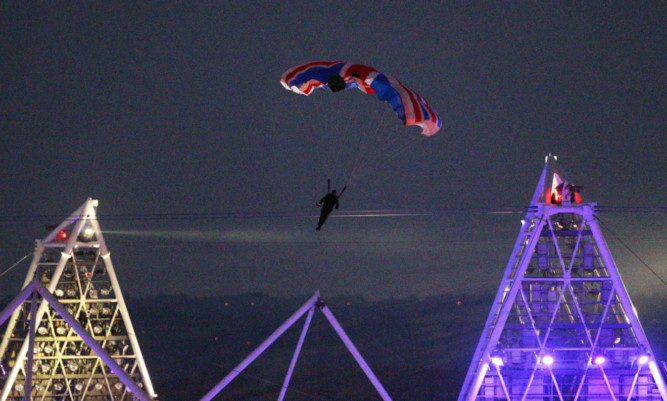Following the death of experienced stuntman Mark Sutton this week, Caroline Lindsay takes a look at the world of extreme sports and asks: how safe is it?
The stuntman who parachuted into the London 2012 Olympics opening ceremony dressed as James Bond has died while wing-diving in Switzerland. Wing-divers wear wingsuits special jump suits which increase the surface area of the body and act like a parachute wing, allowing users to glide through the air at high speeds.
Having jumped from a helicopter from over 3,000m close to a mountainside, Sutton, with his co-jumper, had planned to land in a nearby village but instead hit a mountain ridge and was fatally injured.
Nae Limits, a four-star outdoor activity centre near Pitlochry, offers a range of water-based extreme sports including white-water rafting, canyoning and cliff jumping.
Owner John Mason Strang defines an extreme sport as one that is an extension of the normal level of any given sport, thus pushing its barriers. He is saddened by the death of Mark Sutton but acknowledges that the risk factor is part of the attraction of such sports.
“When you take part at such a level and are as well-educated, experienced and skilled as Mark was, you’re fully aware of the risks involved and that accidents do happen. There are no second chances in a sport like that and he died doing something he loved.
“Part of the attraction of many extreme sports is the challenge of doing something that is out of the ordinary and some people say that coming that close to death can make them feel more alive.
“For me, it’s all about challenging my own levels and capabilities. When I scare myself, the adrenalin rush keeps me going.”
John points out that extreme sports are, in general, very safe. “If you look at the stats, you’re much more likely to be knocked over by a car than have an accident in extreme sport,” he says. “These sports are very well controlled and you are always in the hands of experts who are highly trained and qualified. But it’s down to an individual to pay attention to the skills that the sport requires and to recognise your own abilities and limits.”
Parkour, PK, or free running, a sport using efficient movement to conquer any obstacle, is an extreme sport that has become increasingly popular in recent years. Dan Edwardes, director of Parkour Generations, says: “We don’t see parkour as an extreme sport but, then, if you were to ask most people involved in other extreme sports, they would probably say the same! But the main difference between parkour and other extreme sports is that they are fuelled by adrenalin, whereas you definitely don’t want that in PK you need precision control and your fine motor skills working at their optimum.
“What happened to Mark is very unfortunate but wing-diving is a dangerous sport and these guys know what the risks are. But I don’t think it should put people off taking up extreme sports, or sports of any kind. Your body is designed to move and keep active in order to stay healthy and the risk of injury in a high discipline sport, with the right guidance, training and equipment, is much lower than the risk of dying from heart or liver disease or Type 2 diabetes, all of which are caused by an inactive lifestyle.”
Skateboarding and BMX-ing have earned themselves the title of extreme sports but because they often appeal to younger children, they sometimes have to be toned down, as Derek Marshall, CEO of the Factory Skatepark in Dundee, explains: “It’s a difficult one because we have to make the skatepark as safe as possible without making it too safe! Kids want that adrenalin rush experience and if you wrap everything up in cotton wool too much, they’re just not going to get it.
“Pushing to the extreme is part of the experience. But it is vital to wear a helmet, whatever your age. You can recover from a broken wrist or ankle but a head injury is potentially fatal. I would also urge skateboarders and BMX-ers to be safe in traffic there are enough thrills to be had without car surfing.
“Mark Sutton’s accident was a tragedy but it’s no reason to put people off extreme sports. Enjoy your sports, get your rush, but do it in as safe a way as possible, and always be aware of your limits.”
So, as the world mourns the loss of Mark Sutton, his friend and fellow stuntman Gary Connery, who dressed as the Queen to make his appearance at the Olympic opening ceremony alongside Mark, sums it up well: “Stay safe, make wise choices and know your limits and your locations. Live to tell your stories.”
